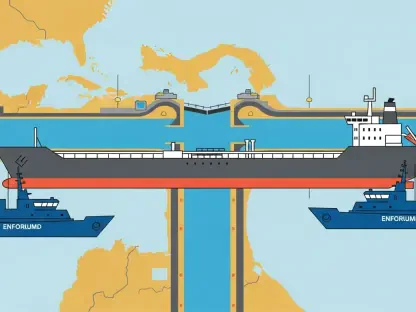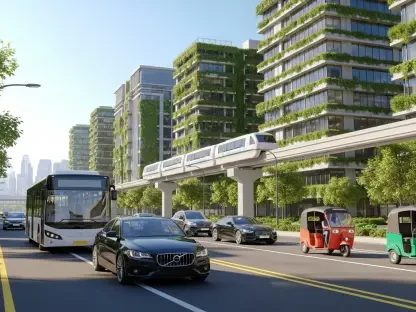In an era grappling with climate change and environmental crisis, the integration of smart grid technology stands as a pivotal advancement in our pursuit of clean energy. These innovative systems are modernizing our power grids, making them more efficient, secure, and adaptive to renewable energy sources. The surge in smart grid innovation observed in recent years is significantly transforming the energy landscape, heralding a future where clean and sustainable energy is not just an ambition but a reality. This transformative potential of smart grids is underpinned by their ability to seamlessly integrate diverse energy sources, manage demand, and ensure energy reliability amid growing global consumption.
Global Trends in Smart Grid Innovation
The evolution of smart grid technology is marked by a distinct global pattern, with significant peaks and shifts in regions of innovation. A noteworthy surge occurred in 2011, with an impressive 2,000 unique inventions, accounting for 11% of power sector innovations. This period of heightened activity, however, was followed by a decline. Despite this, by 2022, the share of smart grid developments rose to 13%, aligning with the International Energy Agency’s (IEA) Net Zero by 2050 Scenario. This reflects the ongoing commitment to mitigating climate change through innovative energy solutions.
The technologies that have predominantly driven this innovation focus on monitoring and managing power generation and network operations. These areas accounted for 41% of smart grid patents in 2020, likely driven by substantial capital investments in advanced power equipment. These innovations play a crucial role in optimizing energy distribution, reducing losses, and enhancing the grid’s resilience against fluctuations and failures.
Furthermore, East Asia, particularly Japan and China, stands out as a powerhouse in smart grid innovation, contributing over half of the world’s advancements in this field. North America and Western Europe follow, though the focus has markedly shifted towards Asia over the past two decades. This shift indicates a regional realignment in technological prowess and investment priorities.
Geographical Hubs of Innovation
The concentration of smart grid innovation in certain global cities underscores the strategic importance these regions hold in advancing clean energy technologies. Cities such as Tokyo, Seoul, Beijing, Nagoya, Nuremberg, and the San Francisco Bay Area have become hubs for significant smart grid innovation. This concentration suggests a focused effort by these cities to lead the charge in transforming energy infrastructures and setting benchmarks for the future.
Europe, in particular, is noted for its specialization in smart grid technology, making it a crucial player in the broader clean energy transition. Although Japan, the United States, and China lead in the volume of innovations, they exhibit less specialization compared to European counterparts.
This geographical concentration of innovation fosters a collaborative environment that accelerates the development and implementation of advanced technologies. It also facilitates knowledge sharing and cross-border partnerships that are essential for addressing the global energy challenge comprehensively.
The Implications of Smart Grid Advancements
In an age where climate change and environmental challenges are at the forefront, the adoption of smart grid technology represents a crucial step towards achieving clean energy goals. These advanced systems are revolutionizing our power grids by enhancing their efficiency, security, and adaptability to renewable energy sources. The rapid development of smart grid technology in recent years is significantly reshaping the energy sector, paving the way for a future where sustainable and clean energy is the norm, rather than a distant objective.
This groundbreaking potential of smart grids lies in their ability to integrate various energy sources smoothly, balance energy demand, and maintain energy reliability despite the increasing global consumption. Smart grids offer solutions such as real-time monitoring, automated responses to energy demand fluctuations, and efficient distribution of electricity. As a result, they contribute greatly to reducing greenhouse gas emissions and promoting the use of renewable energy sources, making them essential in our fight against climate change and our quest for a sustainable future.









